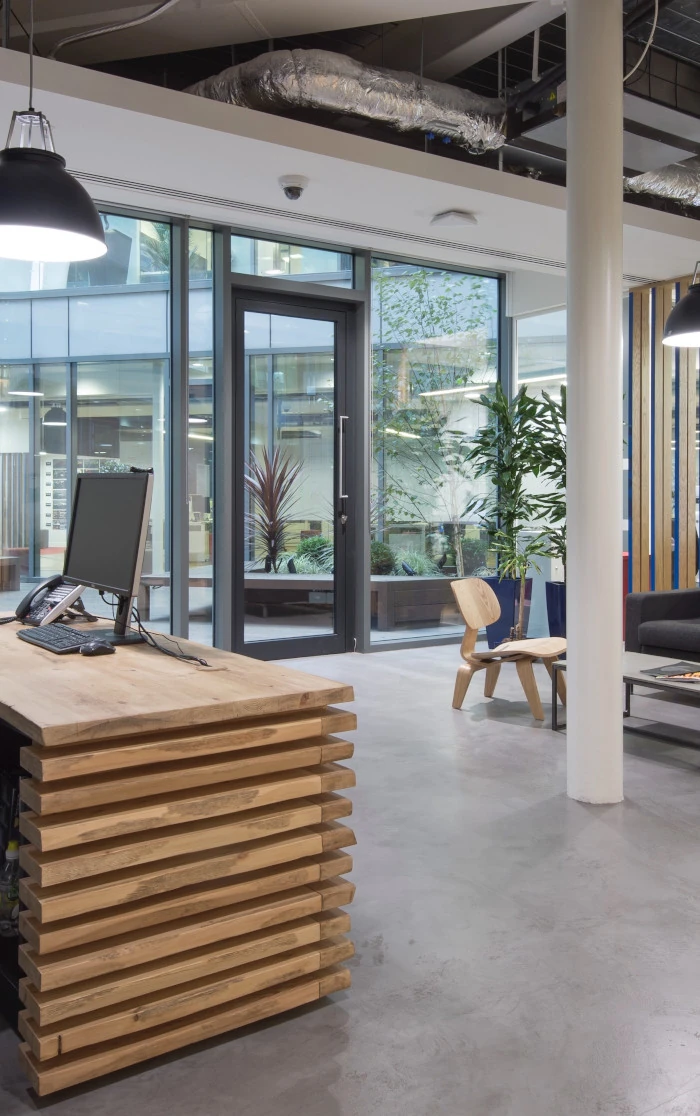Workplace Wellbeing is a Great Investment
29/05/20< Back to news index
Recent research has shown that 80% of employees with effective health and wellness schemes - including tailored office design - at work feel more engaged than those without such a scheme and develop a positive attitude to the company, working better and being absent less often.
Done well, workplace wellbeing should will create a safe, comfortable environment where everyone connects, participates actively, and keeps learning and performing to the best of their abilities.
Before you think about design, it's good to assess your company's specific requirements. Each staff member will have different needs based on their physical and mental health and their preferred way of working, so you may want to reach out to them to see what the common themes are.
When it comes to designing a workplace with wellbeing at its heart, the main areas to consider are:

- The working environment: Improvements in office design might include increasing access to natural light, air quality and ventilation, and creating spaces where staff can relax. Standing or adjustable desks can reduce stiffness, back pain and muscular problems. There are many affordable tools that help prevent eye strain for people working at screens.
Adopt design features that reduce noise and increase concentration. An ergonomics assessment and consultation with staff will highlight the areas needing most attention. Make sure people have breakout spaces where they can focus, collaborate openly, make calls or just get a change of scene from their desk. - Exercise: Encouraging staff to walk or cycle to work when possible greatly increases their wellbeing and health. You can make healthy commuting more popular by installing bike racks, showers and changing rooms.
It's also worth checking what facilities there are locally for people who might like to go to the gym, take part in fitness classes or walking groups. Subsidised membership is popular but just providing information on what is available can often be incentive enough for people to get moving. - Working methods: Flexible working hours and/or some movement when at work can reduce stress and improve wellbeing. If you can, include some remote working and also consider activity-based working on projects in the workplace. "Walking meetings" can be organised both indoors and outside, and it's often easier to think while moving. If your meetings are short, you could suggest making them standing meetings, which helps posture but also prevents the meeting overrunning because people are too comfortable!
- Nutrition: If you can, provide free fruit, healthy meal options and order healthy snacks for meetings and project work. Tea, coffee and water should be readily available. If your options are more limited, consider sharing tips on where to eat or shop locally, preparing healthy lunches or nutritional advice. Your breakout or eating areas should be clean and appealing so people don't want to stay at their desk.
- Mental health and personal growth: Hold a health day and assess individual needs. Some people like to go outside, meditate for a while, or rest, and come back refreshed and energised. You may want to consider a Quiet Room where people can go to meditate, pray or rest. Promote the company culture so everyone feels part of the organisation. Weekly coffee or drinks together increase morale and the work-life balance.
For a real boost, consider bringing the power of nature into the workplace via biophilic design. This is an incredibly powerful tool in improving your staff's wellbeing.
Drop us a line if we can help you design a workplace with wellbeing at its core.